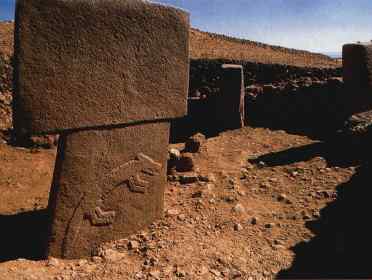Göbekli Tepe – Discovery that Turned the Understanding of Early History On its Head

In 1994, a discovery by a Kurdish shepherd radically changed our understanding of early history. Strange, oblong stones he discovered atop of a hill not far from the town of Sanliurfa in southeastern Anatolia, Turkey, turned out to be the one of the most important archaeological finds in the last few decades and according to some scholars, one of the most important discoveries ever. The site, known as Göbekli Tepe consists of at least 20 rings of monumental pillars that are strikingly reminiscent to those in Stonehenge, however, there are two major differences between Göbekli Tepe and Stonehenge. The massive T-shaped limestone pillars at Göbekli Tepe were cut with extraordinary precision and the most important of all – they were erected about 12,000 years ago which means that they predate Stonehenge for about 7,000 years. Göbekli Tepe is significantly older than any other monumental structure discovered to date but it raises more questions than it answers.
The site is undergoing archaeological excavation since the mid-1990s, however, only a small part of what is believed to had been a some sort of sanctuary has been excavated so far. Hundreds of massive pillars arranged in circles are still buried in the hill but the megaliths that were excavated have stunned the scientific community. The circles of mostly T-shaped limestone pillars were radiocarbon dated to 10,000 BC, the time of hunter-gatherers and the time when humans were believed to be incapable to construct anything more complex than a hut. Until the discovery of gigantic monolithic pillars at Göbekli Tepe, the scholars were convinced that monumental architecture was a natural course of the emergence of complex societies which in turn developed only after the Neolithic Revolution or the transition from hunting and gathering to agriculture and permanent settlements.
The archaeological evidence leave no doubt that the gigantic monolithic pillars at Göbekli Tepe were built by a hunter-gatherer society which lived in small groups in a world that did not know pottery, metal and writing. Yet they managed to cut, shape and erect hundreds of up to 16 tons heavy and 18 feet (5.4 meters) high stone pillars with outstanding precision probably using primitive stone tools discovered nearby. Many pillars were also decorated with carved reliefs revealing a high level of masonry expertise. But due to the age of the site, the interpretation of the meaning of carved animals, abstract symbols and humanoid-like forms is extremely difficult and nearly impossible to prove. The site was probably used for religious purposes, however, the exact purpose of Göbekli Tepe remains a matter of debate also due to the fact that most of the complex still waits to be excavated.
In addition to who built Göbekli Tepe and for what purpose, the scholars are also puzzled by the deliberate burial of the circles of pillars and construction of new ones. The archaeological excavations have revealed that after a few decades, the pillars were buried and new ones were erected over or nearby the original ones. In addition, the pillars were getting simpler, smaller and less artistically sophisticated. Around 8,000 BC, the complex was completely buried to form an artificial hill where a Kurdish shepherd stumbled upon a strange stone that caught his attention 10,000 years later.




